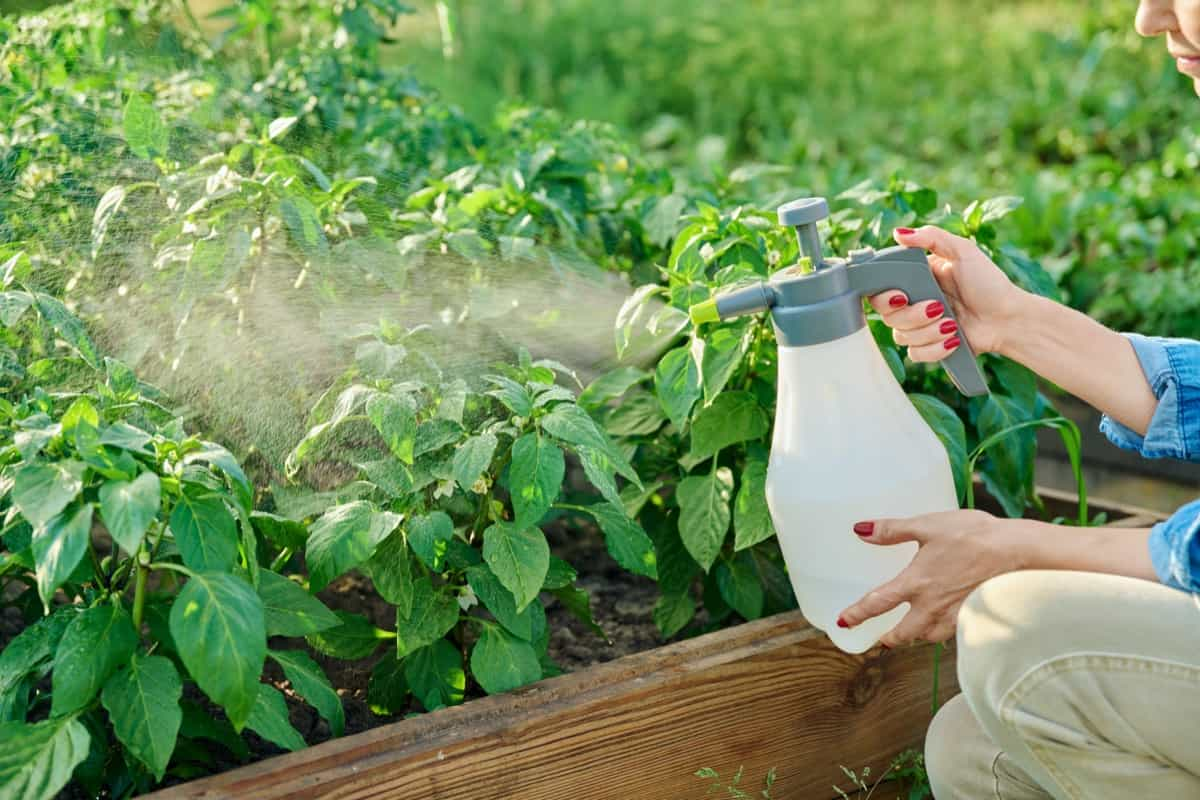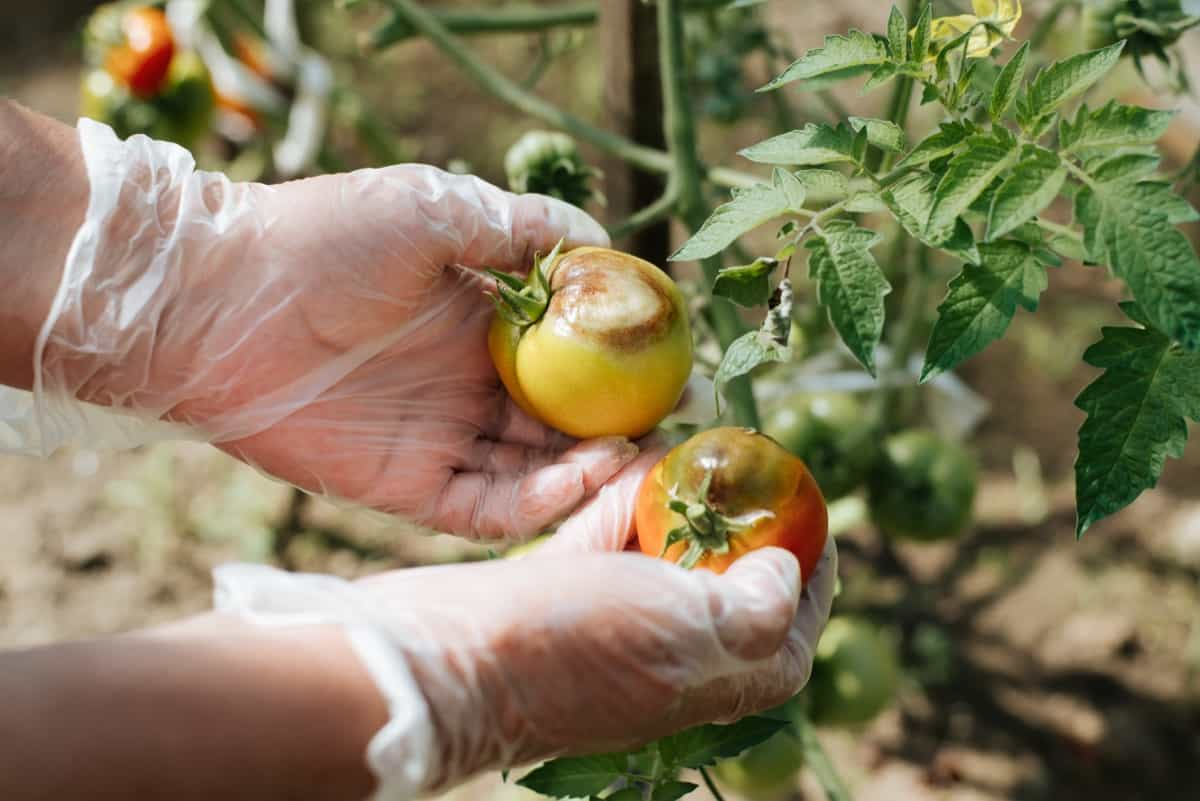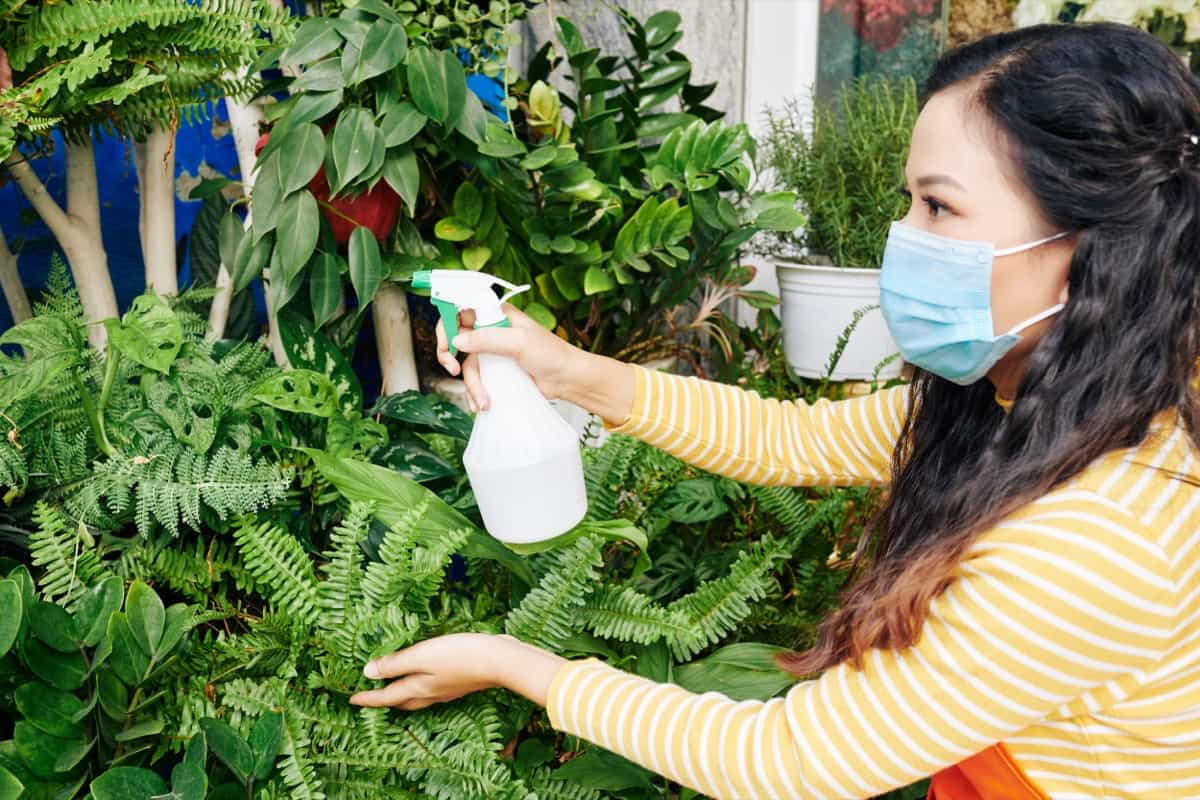Gardening enthusiasts often face the challenge of common plant fungal diseases threatening their plants’ health. This blog explores effective homemade, natural, and organic remedies to combat these issues. Discover sustainable solutions backed by accurate data, providing an easy-to-follow guide for preventing and controlling fungal diseases in your garden.

Embrace organic methods that prioritize plant health, ensuring a thriving garden environment without resorting to harsh chemicals. Elevate your gardening experience with these practical insights and eco-friendly approaches.
How to Control Common Plant Fungal Diseases
What are Common Plant Fungal Diseases?
Common plant fungal diseases, such as black spot, powdery mildew, rust, botrytis blight, and downy mildew, can cause wilting, rot, drop, or death in plants. Black spot is a fleshy disease that causes black, brown, or gray spots on the upper sides of leaves that fall off. Powdery mildew is a white powdery fungus growth that spreads in high humidity, poor air circulation, and low soil moisture.
In case you missed it: How to Control Common Plant Pests: Homemade Natural and Organic Remedies to Prevent Plant Bugs

Rust causes orange, yellow, or brown pustules on the undersides of leaves, curling or dropping. Botrytis blight is a grayish mold that affects strawberries, grapes, peonies, geraniums, and dahlias. Downy mildew causes yellow or purple spots on the upper sides of leaves and white or gray mold on the lower sides.
Symptoms of Fungal Infections in Plants
Fungal diseases are common problems in plants, particularly in humid and wet conditions. They can cause various symptoms, such as spots, wilting, rotting, or powdery growth on leaves, stems, flowers, or fruits. Some common fungal diseases include black spots, powdery mildew, rust, botrytis blight, and downy mildew. Black spot affects fleshy plants with fleshy leaves and stems, causing black, brown, or gray spots on the upper sides of leaves.
Powdery mildew affects many plants, causing white or gray powdery growth on leaves, stems, flowers, or fruits. It doesn’t need free water to spread and can grow in high humidity and low soil moisture. Remove infected leaves, avoid overcrowding, and spray with a baking soda solution to prevent it.
Rust affects many plants, causing orange, yellow, brown, or black pustules on the undersides of leaves or stems. Botrytis blight affects many plants, causing soft, mushy spots on stems, leaves, flowers, or produce. Downy mildew causes yellow or brown spots on the upper sides of leaves and white or gray mold on the lower sides. It grows in cool, moist weather and infects young or stressed plants.
Why Preventing Plant Fungal Diseases is Needed?
Plant fungal diseases can harm crops and reduce food production. They can also affect the quality and safety of food. Some plant fungal diseases can infect humans and animals, causing health problems. Therefore, preventing plant fungal diseases is needed to protect from natural environment, the economy, and the well-being of living beings. Preventing plant fungal diseases can also save resources and reduce the use of pesticides that can harm the environment and human health.
Create a Healthy Environment for Your Plants
Plants are living organisms that need a healthy environment to grow and thrive. A healthy plant environment includes adequate sunlight, water, air, soil, and nutrients. However, plants sometimes get sick from fungal infections that damage their leaves, stems, roots, or fruits. Fungal infections can spread quickly and affect the health and appearance of your plants. Fortunately, some natural remedies can help you prevent and treat plant fungal infections.
Use Natural Remedies to Prevent Fungal Infections in Plants
Use natural remedies to prevent fungal infections in plants. One of the most best ways to prevent fungal infections is to avoid overwatering your plants, as excess moisture can create a favorable condition for fungi to grow. You should also avoid crowding your plants, as poor air circulation can promote fungal growth. Additionally, you should remove dead or diseased plant parts as soon as possible, as they can harbor fungal spores that infect other plants.
In case you missed it: Tailoring DIY Vegetable Plants Fertilizers to Different Growth Phases

Explore Organic Solutions for Controlling Plant Fungal Diseases
Explore organic solutions for controlling plant fungal diseases. You can try organic solutions to control the disease if you notice signs of fungal infection on your plants, such as spots, patches, powdery coating, or wilting. For example, using baking soda, vinegar, or hydrogen peroxide to make a spray that can kill the fungi on the plant’s surface. You can also use garlic, onion, or horseradish to make a spray that can repel the fungi and boost the plant’s immunity.
Make Homemade Sprays to Combat Fungal Infections in Plants
Make homemade sprays to combat fungal infections in plants. Another option is to make homemade sprays using natural ingredients with antifungal properties. For instance, you can use milk, yogurt, or whey to make a spray that can prevent and treat powdery mildew, a common fungal disease that affects many plants. You can also use cinnamon, clove, or ginger to make a spray that can inhibit the growth of various fungi.
Consider Using Essential Oils to Prevent Fungal Diseases in Plants
Consider using essential oils to prevent fungal diseases in plants. Essential oils are more concentrated extracts from plants that benefit humans and plants alike. Some essential oils have antifungal effects that can help prevent and treat plant fungal diseases. For example, Using tea tree oil, lavender oil, or rosemary oil to make a spray that can kill or deter the fungi on your plants. However, you should be atmost careful when using and choosing essential oils, as they can be toxic to some plants or animals if used in high concentrations or applied directly.
Harness the Power of Beneficial Bacteria and Fungi for Plant Health
Beneficial bacteria and fungi are microorganisms that live in the soil and help plants grow healthy and strong. They can improve the soil structure, increase the nutrient availability, protect the plants from diseases and pests, and enhance the plant’s resistance to stress. Beneficial bacteria and fungi can be introduced to the soil through organic matter, compost, mulch, or inoculants. By harnessing the power of these beneficial microorganisms, you can improve your plant health and productivity.
Use Soil Amendments to Prevent Fungal Diseases in Plants
One of the ways to prevent fungal diseases in plants is to use soil amendments that improve soil structure, drainage, and fertility. Soil amendments and materials added to the soil to enhance its physical, chemical, or biological properties. Some examples of soil amendments are compost, manure, worm castings, biochar, rock dust, and seaweed.
These amendments can increase the soil’s organic matter content, providing food and habitat for beneficial bacteria and fungi. They can also improve the soil’s ability to retain water and nutrients, reducing plant stress and making them more disease-resistant.
Practice Proper Watering Techniques to Avoid Fungal Infections
To prevent fungal diseases in plants, practice proper watering techniques that avoid creating wet and humid conditions that encourage fungal growth. Deep, infrequent watering encourages deep root growth and reduces waterlogging. Watering early morning or late evening reduces evaporation, allowing plants to dry off before nightfall. Watering at the base prevents water from splashing on leaves and stems, spreading fungal spores and creating infection. Using drip irrigation or soaker hoses delivers water directly to the root zone, preventing wetting the entire soil surface.
In case you missed it: Pest Management in Quinoa: Major Insect Pest of Quinoa, Control and Prevention Methods

Implement Mulching Strategies for Fungal Disease Control
Mulching is a method to prevent fungal diseases in plants by protecting the soil surface from erosion, weed growth, temperature fluctuations, and moisture loss. Mulches, such as straw, wood chips, leaves, grass clippings, newspaper, plastic, or gravel, can suppress weed growth, moderate soil temperature, retain soil moisture, and prevent soil splash, which can transfer fungal spores from the soil to plant parts. This helps to maintain plant growth and disease resistance while reducing water stress and promoting beneficial microbial activity.
Use Companion Planting to Deter Plant Fungal Diseases
Companion planting is a method of preventing fungal diseases in plants by growing plants that benefit each other. Examples include planting plants that repel pests, attract beneficial insects, fix nitrogen in the soil, and have different root depths or growth habits. These methods harness the power of beneficial bacteria and fungi for plant health, allowing for a healthy and productive garden. Examples include marigolds, garlic, onions, basil, lavender, mint, dill, sunflowers, beans, peas, clover, and comfrey.
Follow Pruning and Sanitizing Practices for Disease Prevention
Pruning is a practice that involves removing dead, diseased, or damaged parts of a plant to improve its health and appearance. Pruning can also help prevent fungal diseases by removing the infected tissues and improving air circulation around the plant. However, pruning can also create wounds that can be entry points for fungal pathogens. Therefore, it is essential to sanitize your pruning tools before and after each use with a solution of bleach or alcohol. You should also dispose of the pruned materials properly and avoid composting them.
Ensure Good Air Circulation and Proper Plant Placement for Fungal Disease Management
Fungal diseases commonly affect plants, particularly in humid or wet conditions. They cause symptoms like leaf spots, wilts, blights, and rots, affecting plant health and appearance. To prevent or manage fungal diseases, following basic practices that improve the growing environment and plant resistance is crucial.
One effective method is to ensure good air circulation and proper plant placement. Air circulation helps dry out excess moisture, while proper plant placement depends on the plant’s light, water, and soil requirements. Overcrowded, shaded, or stressed plants are more susceptible to fungal infections.
Provide Nutritional Support for Plants to Resist Fungal Infections
Plants require a balanced supply of nutrients like nitrogen, phosphorus, potassium, calcium, magnesium, sulfur, iron, and others to prevent fungal diseases. A soil test can determine these levels and pH, allowing for the application of appropriate fertilizers or amendments. However, too much or too little of any nutrient can cause problems, so it’s crucial to follow the recommended rates and timings of fertilization.
In case you missed it: Easy Homemade Recipes for Garden Plants: Natural and Organic Fertilizer for Vegetables, Flowers, and Houseplants

Adopt Integrated Pest Management for Fungal Disease Control
Integrated pest management most adopted strategy that uses all combination of biological, cultural, mechanical, and chemical methods to control pests, diseases in an environmentally friendly way. IPM can help you prevent and manage plant fungal diseases by reducing the factors that favor their development and spread. For example, you can use beneficial insects or microorganisms to control the pests that can transmit fungal spores, such as aphids or mites.
You can also use mulches, crop rotation, or intercropping to suppress the growth of weeds that can host fungal pathogens. You can also use physical barriers, such as nets or covers, to protect your plants from wind-borne spores or rain splashes. Finally, you can use fungicides as a last resort when other methods fail or when the disease is severe. However, you should always follow the label instructions and apply them carefully and sparingly to avoid harming beneficial organisms or causing resistance in the pathogens.
Monitor and Intervene Early Against Plant Fungal Diseases
Plant fungal diseases are a major threat to crop production and food security. They can reduce crop yield, quality, and marketability and cause losses of billions of dollars annually. Therefore, monitoring and intervening early against plant fungal diseases is important to prevent or minimize their impact. To keep an eye on plant fungal diseases, you have to find and name the pathogens that cause them, rate the disease’s severity and spread, and look at the environmental and farming conditions that make it more likely to spread.
In case you missed it: Integrated Pest Management for Greenhouse Crops: IPM Strategies for Greenhouse Plants

To stop plant fungal diseases early, you need to use the right management techniques, like biological, chemical, or cultural ones, to cut down on the sources of the diseases, stop the disease cycle, or make plants more resistant. By monitoring and intervening early against plant fungal diseases, farmers can protect their crops and increase their productivity and profitability.
Conclusion
Adopting homemade natural and organic remedies to prevent common plant fungal diseases is a sustainable approach to a thriving garden. By prioritizing eco-friendly solutions, gardeners promote plant health, minimize chemical reliance, and cultivate a resilient and vibrant green space.
- Types of Pesticides Used in Agriculture: A Beginner’s Guide
- Economical Aquaculture: A Guide to Low-Budget Fish Farming
- 15 Common Planting Errors That Can Doom Your Fruit Trees
- How to Make Houseplants Bushy: Effective Tips and Ideas
- Innovative Strategies for Boosting Coconut Pollination and Yield
- Pollination Strategies for Maximum Pumpkin Yield
- The Complete Guide to Chicken Fattening: Strategies for Maximum Growth
- Natural Solutions for Tulip Problems: 100% Effective Remedies for Leaf and Bulb-Related Issues
- Revolutionizing Citrus Preservation: Towards a Healthier, Greener Future
- Natural Solutions for Peony Leaf and Flower Problems: 100% Effective Remedies
- Maximizing Profits with Avocado Contract Farming in India: A Comprehensive Guide
- Natural Solutions for Hydrangea Problems: 100% Effective Remedies for Leaf and Flowers
- The Ultimate Guide to Choosing the Perfect Foliage Friend: Bringing Life Indoors
- From Sunlight to Sustainability: 15 Ways to Use Solar Technology in Agriculture
- The Ultimate Guide to Dong Tao Chicken: Exploring from History to Raising
- The Eco-Friendly Makeover: How to Convert Your Unused Swimming Pool into a Fish Pond
- Mastering the Art of Delaware Chicken Farming: Essentials for Healthy Backyard Flocks
- 20 Best Homemade Fertilizers for Money Plant: DIY Recipes and Application Methods
- How to Craft a Comprehensive Free-Range Chicken Farming Business Plan
- Brighten Your Flock: Raising Easter Egger Chickens for Beauty and Bounty
- How to Optimize Your Poultry Egg Farm Business Plan with These Strategies
- Subsidy for Spirulina Cultivation: How Indian Government Schemes Encouraging Spirulina Farmers
- Ultimate Guide to Raising Dominique Chickens: Breeding, Feeding, Egg-Production, and Care
- Mastering the Art of Raising Jersey Giant Chickens: Care, Feeding, and More
- Ultimate Guide to Raising Legbar Chickens: Breeding, Farming Practices, Diet, Egg-Production
- How to Raise Welsummer Chickens: A Comprehensive Guide for Beginners
- How to Protect Indoor Plants in Winter: A Comprehensive Guide
- Ultimate Guide to Grow Bag Gardening: Tips, Tricks, and Planting Ideas for Urban Gardeners
- Guide to Lotus Cultivation: How to Propagate, Plant, Grow, Care, Cost, and Profit
- Agriculture Drone Subsidy Scheme: Government Kisan Subsidy, License, and How to Apply Online
- Ultimate Guide to Raising Araucana Chickens: Breed Profile, Farming Economics, Diet, and Care
- Bringing Hydroponics to Classroom: Importance, Benefits of Learning for School Students
- Ultimate Guide to Raising Polish Chickens: Breed Profile, Farming Economics, Diet, and Care
- Ultimate Guide to Raising Australorp Chickens: Profile, Farming Economics, Egg Production, Diet, and Care
- Silkie Chicken Farming: Raising Practices, Varieties, Egg Production, Diet, and Care
- Sussex Chicken Farming: Raising Practices, Varieties, Egg Production, Diet and Care